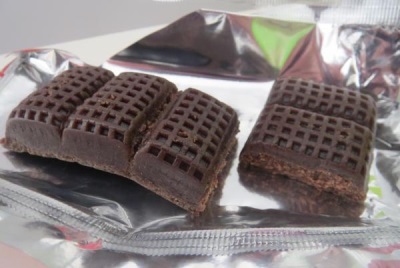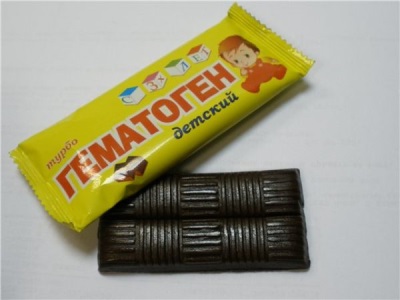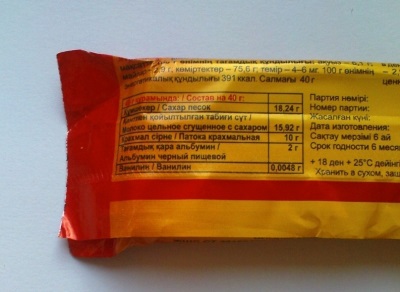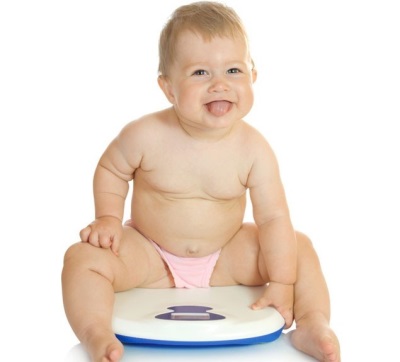The use of hematogen for children and from what age can it be given?
Hematogen is familiar to almost every one of our compatriots over the age of 30, because in Soviet times, almost every child asked for this inexpensive sweetness from his mother. Then the hematogen was often prescribed during the period of recovery from the disease, and it was possible to purchase a sweet tile from the blood of animals only at a pharmacy.
Now the hematogen has changed in appearance and in its composition (it often includes various additional ingredients), and you can buy it in the store. At the same time, the properties of such a food additive remained the same.
Hematogen, as before, stimulates blood formation, therefore it is impossible to use it in large quantities.
Many mothers are naturally interested in the age with which hematogen is given to children and what dosage of this sweetness should be observed in childhood.
Hematogen composition
The main component of the hematogen is represented by the blood of cattle, which on the package is designated as food albumin. In the production of bars, blood is defibred and thoroughly cleaned, eliminating any bacteria.
So that children have less allergies, many modern types of hematogen are released without dry blood. It is replaced with purified hemoglobin.
To taste hematogen is not like chocolate, but more like an iris. The consistency of the tile is thick, but soft enough for the child to chew. The additional ingredients of hematogen can be molasses, honey, coconut chips, sugar, condensed milk, chocolate, nuts, candied fruits, sesame and other products.
What is useful hematogen
Such a sweet food supplement is a very nutritious product, since it acts as a source of essential and non-essential amino acids, easily digestible sugars, fat-soluble vitamins (especially vitamin A), animal fats, and vitamin C.
Hematogen makes the presence of divalent iron in such a bar especially valuable. It is easily absorbed by the children's body and helps prevent iron deficiency anemia. In addition to iron, the hematogen is rich in potassium, chlorine, calcium and sodium.

Indications
Due to its high nutritional value and the presence in the composition of nutrients hematogen is recommended:
- With iron deficiency anemia, as well as for its prevention.
- In cases of general depletion of the body, for example, due to malnutrition, excessive exercise or prolonged stress.
- Children with ulcerative diseases of the digestive system, in which bleeding is possible.
- With hypovitaminosis, in particular, with a shortage of vitamin A.
- During recovery after acute illness.
- In case of hypotrophy, when the child is underweight or there is a lag in growth.
Harm
With prolonged and frequent use of hematogen, especially if its daily dosage is exceeded, it is possible:
- Increased levels of iron in the body, resulting in damage to the cell walls of blood vessels, stomach cramps, blackening of feces, heartburn, metallic taste in the mouth.
- The development of an allergic reaction, for example, urticaria.
- Blood clots that can lead to thrombophlebitis.
- Nausea, dizziness and diarrhea caused by fermentation in the digestive tract due to an excess of hematogen.
- Weight gain, if the use of hematogen increases daily calories.
Contraindications
Hematogen is not recommended for:
- Intolerance to any component of the sweet tile.
- Diabetes mellitus.
- Obesity.
- Anemia, the cause of which is not iron deficiency.
- Metabolic disorders.
- Thrombophlebitis.
- Varicose disease.
- Age of the child up to 3 years.
Side effect
Some babies taking hematogen can cause irritation of the digestive tract, which is associated with the presence of iron ions in the supplement. In such cases, the child will complain of abdominal discomfort and nausea.
Instructions for use
Most manufacturers offer consumers hematogen in the form of a tile, divided into cubes. Also, such a dietary supplement can be represented by bars, divided into plates.
Children hematogen is recommended to give from 3 years of age in the following dosage:
|
From 3 to 6 years |
5 grams 3 times a day (daily dosage - 15 grams) |
|
From 6 to 12 years |
10 grams 2 times a day (daily dosage - 20 grams) |
|
Over 12 years old |
10 grams 3 times a day (daily dosage - 30 grams) |
Apply hematogen in children should be subject to such nuances:
- The duration of daily use of hematogen should not exceed 21 days.
- To assimilate the sweetness, cubes or hematogen plates are given between meals.
- Wash down the dietary supplement is allowed with water or fruit juice, but in no case milk or tea, since the combination of hematogen with dairy products or tannins will be an obstacle to the absorption of iron and other beneficial compounds.
- In addition, the intake of hematogen should not be combined with the use of multivitamin preparations.
Opinion Komarovsky
A popular doctor calls hematogen a useful product rich in carbohydrates, proteins, fats and other useful substances. He emphasizes that the sweet tiles sold by now in pharmacies with this name do not always contain iron. In addition, Komarovsky focuses on the fact that any hematogen is not a medicine, but acts as an additive to food. If a baby has anemia, it cannot be treated with a hematogen.
You can learn the opinion of the famous pediatrician about hematogen from the following video.
How to choose a hematogen for a child
On the shelves of shops and pharmacies in our time, you can buy hematogen, which has no relation to this supplement. Manufacturers produce such bars with the expectation that the mother will pay attention to the well-known name and buy the sweetness. Therefore, when choosing a hematogen, one should always read its label. A quality product should include food albumin, which in its composition will come first. If the package indicates the percentage amount, then the optimum is considered 4-5% albumin of the total mass of the product.
For more information about the benefits and dangers of hematogen, see the program "On the most important thing".

































































